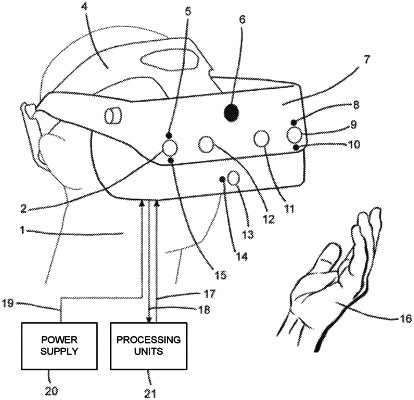| CPC G02B 27/017 (2013.01) [G02B 27/0093 (2013.01); G06T 19/006 (2013.01); G02B 2027/014 (2013.01); G02B 2027/0134 (2013.01); G02B 2027/0138 (2013.01); G02B 2027/0187 (2013.01)] | 21 Claims |

|
1. A method comprising:
at a head-mounted device (HMD) including non-transitory memory, one or more processors, and a communications interface for communicating with first and second RGB camera sensors, first and second mono camera sensors, and a display;
obtaining, via the first and second RGB camera sensors, pass-through stereo view images of a physical environment;
obtaining, via the first and second mono camera sensors, stereo images;
obtaining a dense depth map associated with the physical environment;
performing embedded tracking based on the pass-through stereo view images from the first and second RGB camera sensors, the stereo images from the first and second mono camera sensors, and the dense depth map;
generating rendered graphics associated with virtual content based on the embedded tracking;
generating a display image by mixing the rendered graphics with the pass-through stereo view images from the first and second RGB camera sensors based on the dense depth map; and
displaying, via the display, the display image.
|